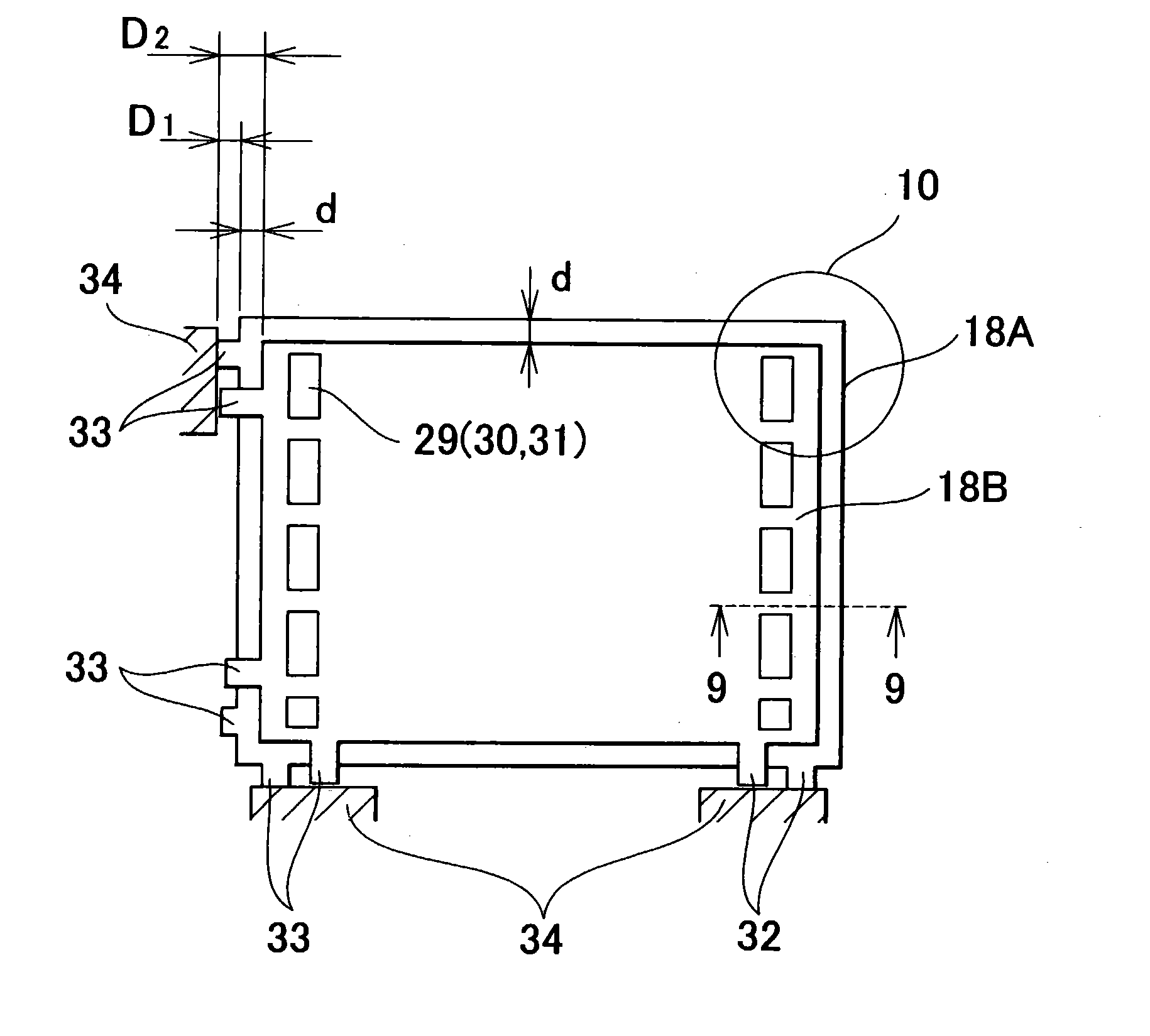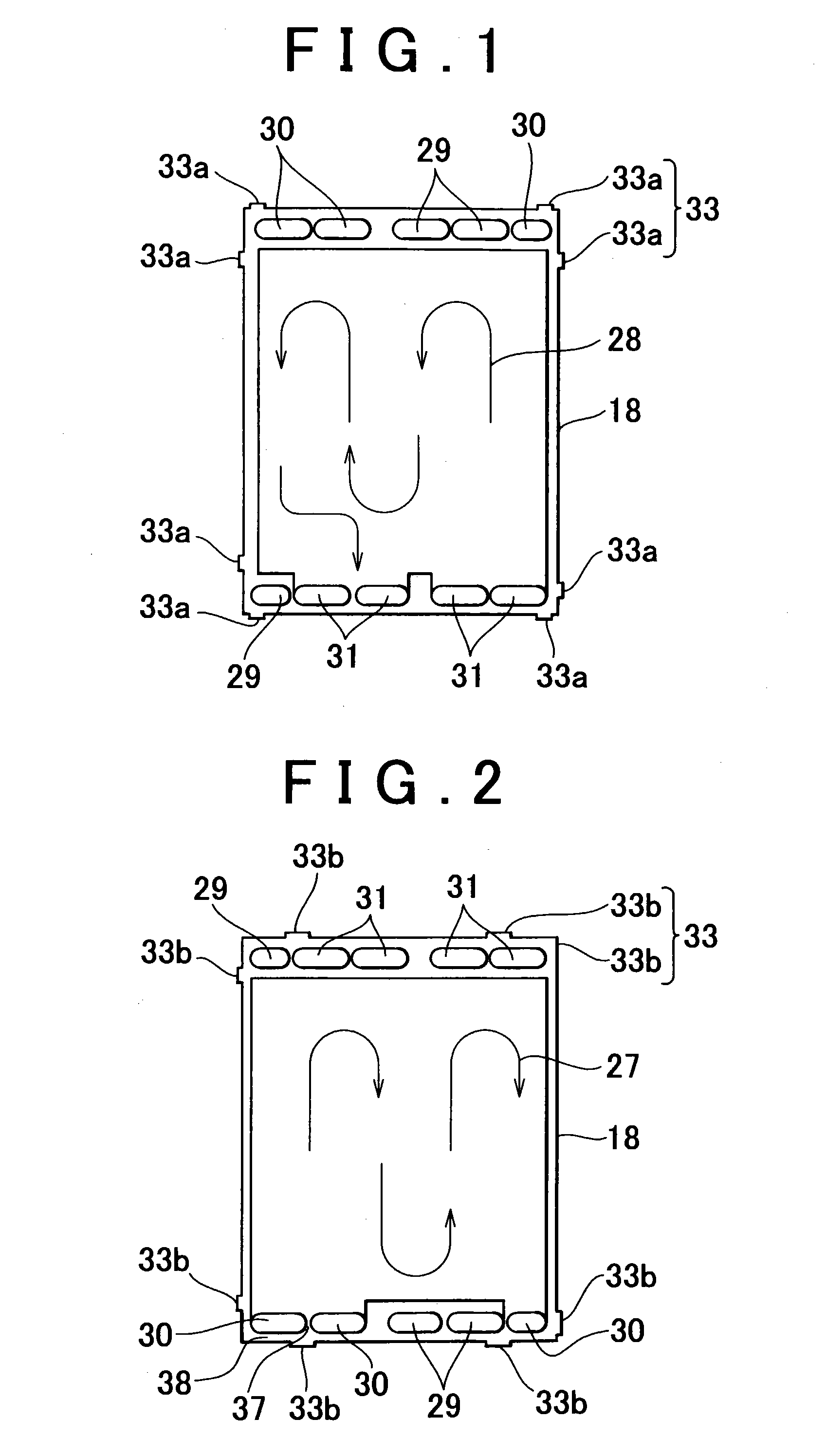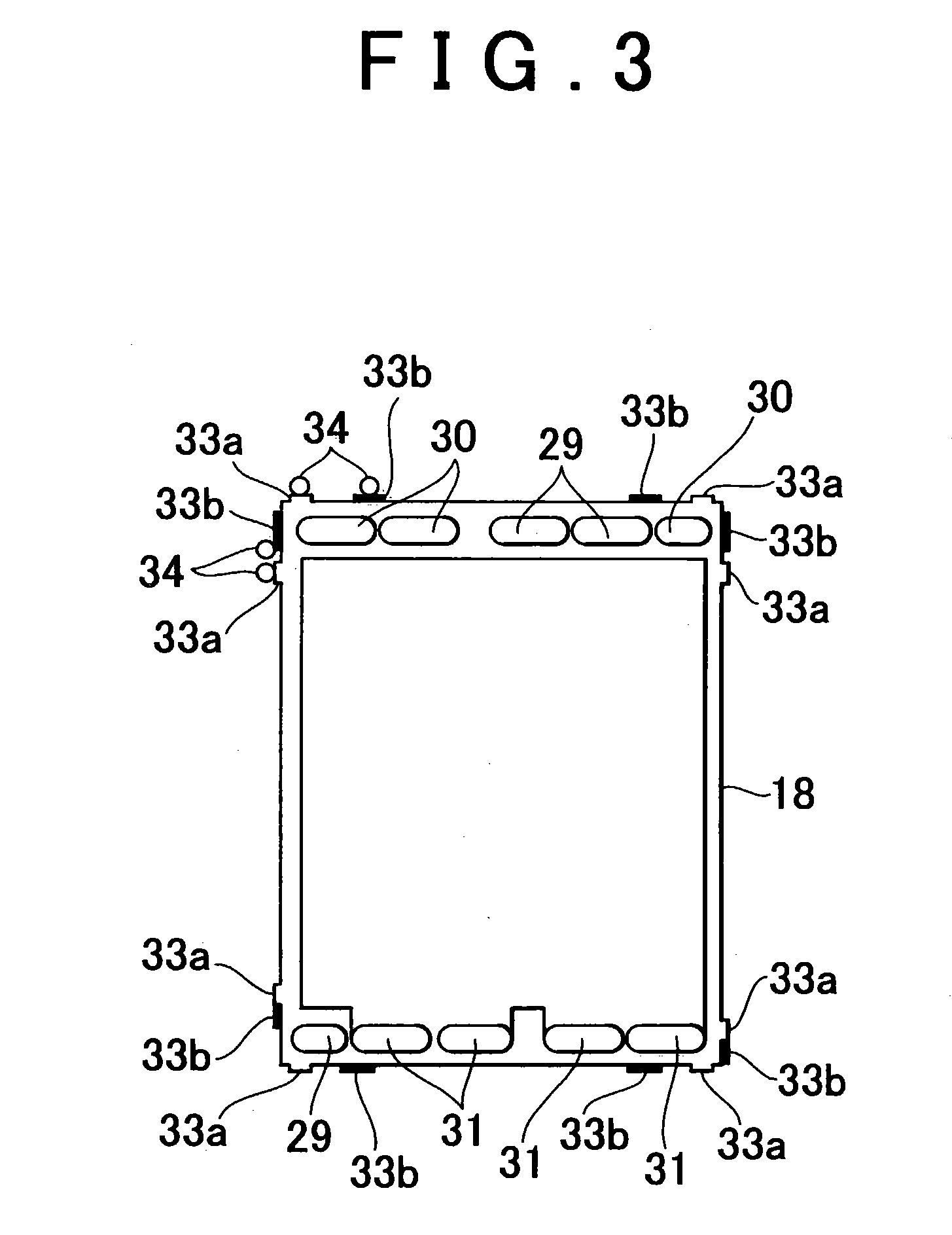Sealing structure of fuel cell and manufacturing method of same
a fuel cell and sealing structure technology, applied in the manufacture of final products, cell components, electrochemical generators, etc., can solve the problems of reducing positioning accuracy, reducing positioning accuracy, so as to prevent the positioning accuracy in stacking cells from being reduced and reducing positioning accuracy
- Summary
- Abstract
- Description
- Claims
- Application Information
AI Technical Summary
Benefits of technology
Problems solved by technology
Method used
Image
Examples
Embodiment Construction
the PREFERRED EMBODIMENTS
[0025] Hereafter, a stack structure of a fuel cell according to the invention will be described with reference to FIGS. 1 to 12. The fuel cell according to the invention is a solid polymer electrolyte membrane fuel cell 100. The fuel cell 100 is mounted, for example, on a fuel-cell vehicle. However, the fuel cell 100 may be employed in products other than an automobile.
[0026] As shown in FIGS. 11, 12, the solid polymer electrolyte membrane fuel cell 100 includes a plurality of Membrane-Electrode Assemblies (i.e., MEAs) and a plurality of separators 18. Each of the MEAs includes an electrolyte membrane 11 formed of an ion-exchange membrane, an electrode (i.e., an anode, a fuel electrode) 14 having a catalyst layer 12 which is provided on one surface of the electrolyte membrane 11, and an electrode (i.e., cathode, an air electrode) 17 having a catalyst layer 15 which is provided on the other surface of the electrolyte membrane 11. A diffusion layers 13 is prov...
PUM
| Property | Measurement | Unit |
|---|---|---|
| height | aaaaa | aaaaa |
| height | aaaaa | aaaaa |
| height | aaaaa | aaaaa |
Abstract
Description
Claims
Application Information
 Login to View More
Login to View More - R&D
- Intellectual Property
- Life Sciences
- Materials
- Tech Scout
- Unparalleled Data Quality
- Higher Quality Content
- 60% Fewer Hallucinations
Browse by: Latest US Patents, China's latest patents, Technical Efficacy Thesaurus, Application Domain, Technology Topic, Popular Technical Reports.
© 2025 PatSnap. All rights reserved.Legal|Privacy policy|Modern Slavery Act Transparency Statement|Sitemap|About US| Contact US: help@patsnap.com



